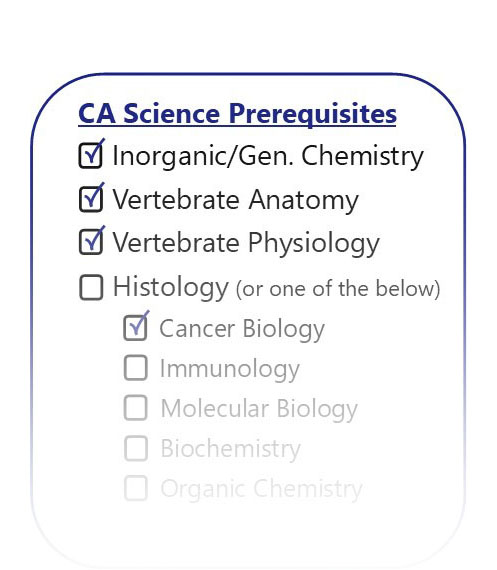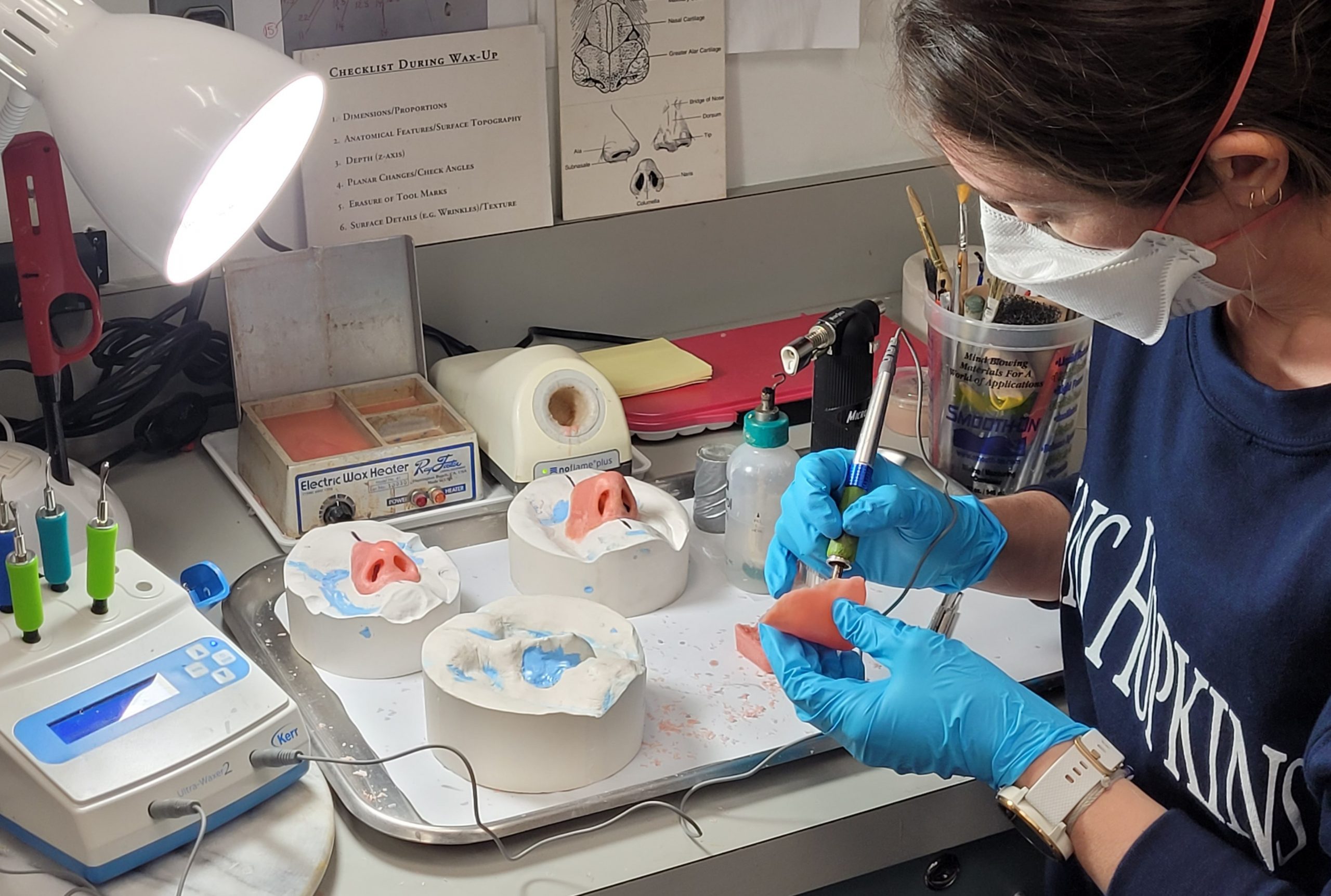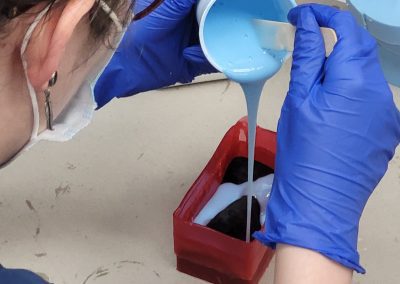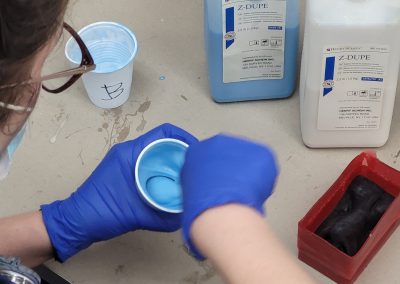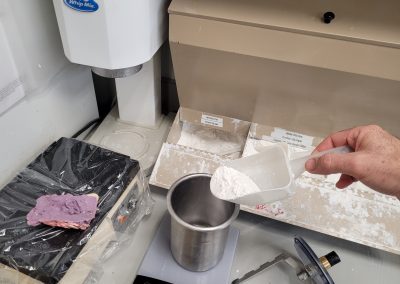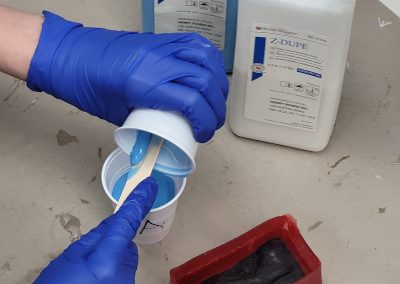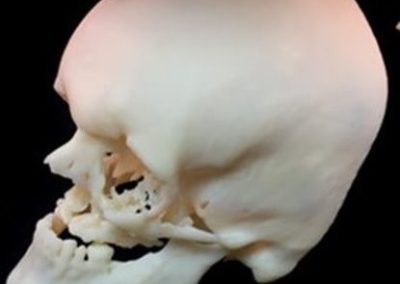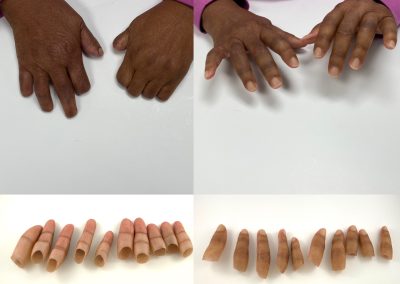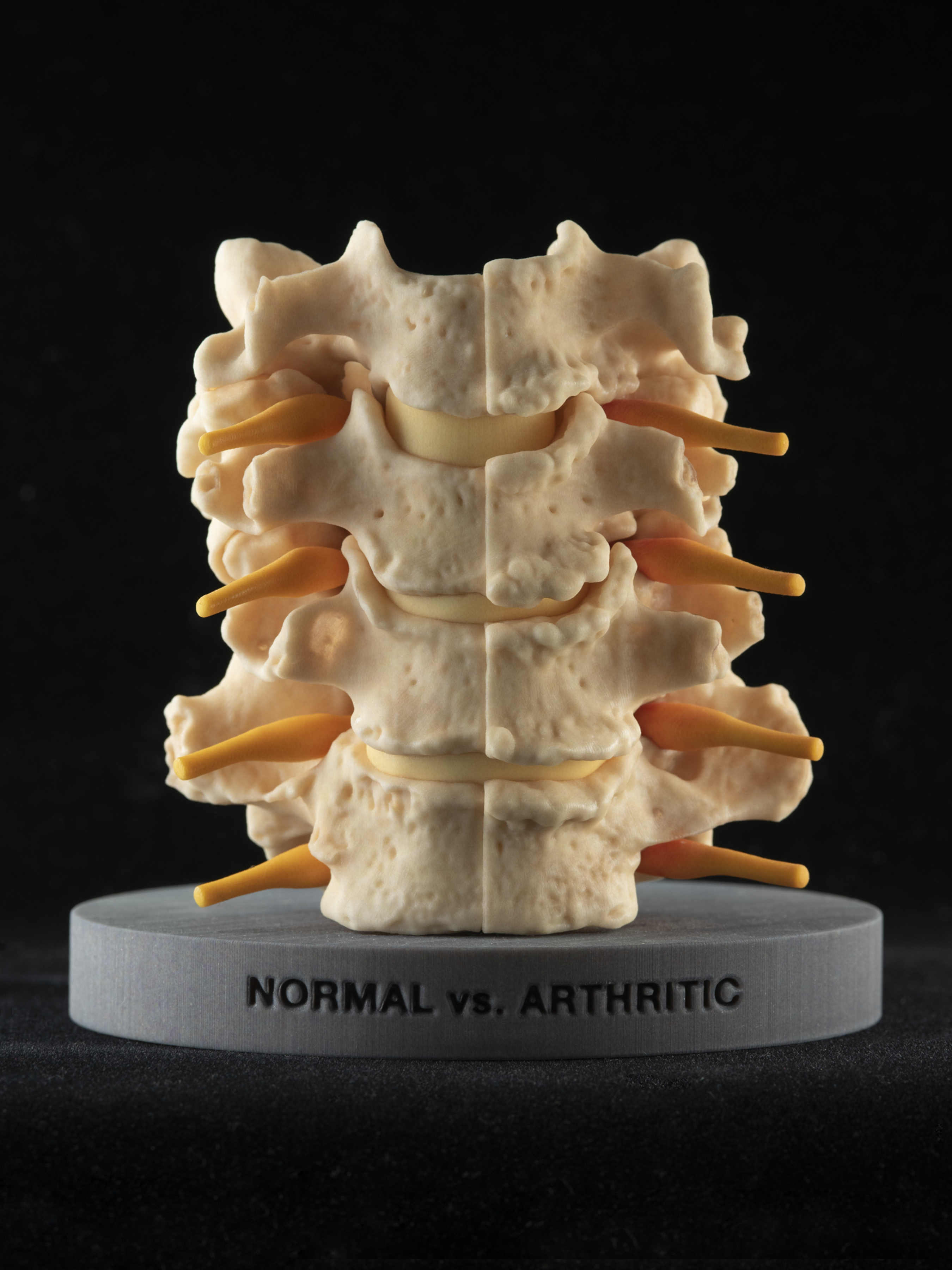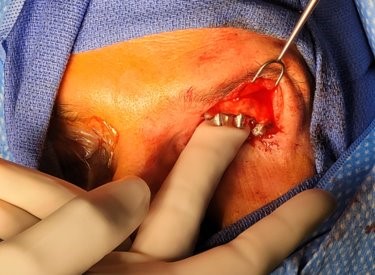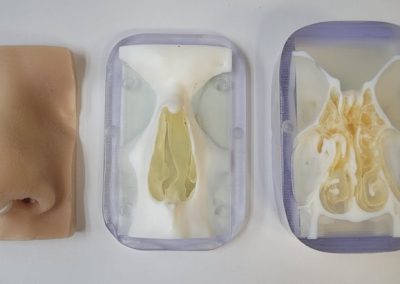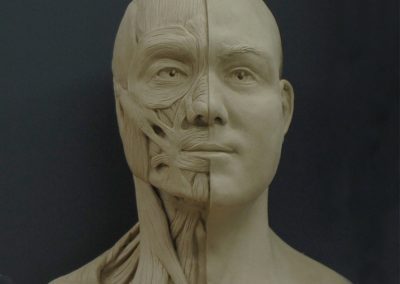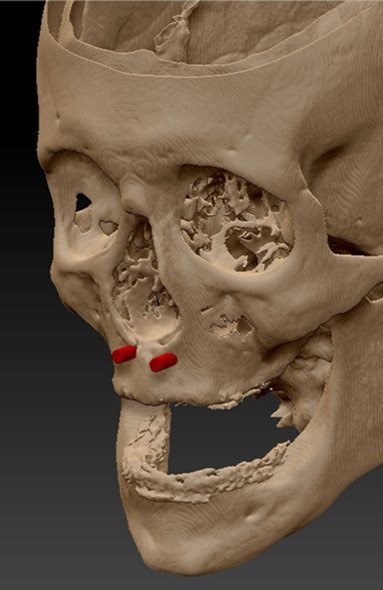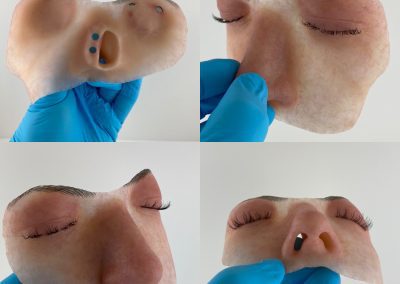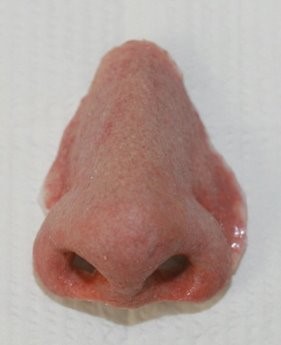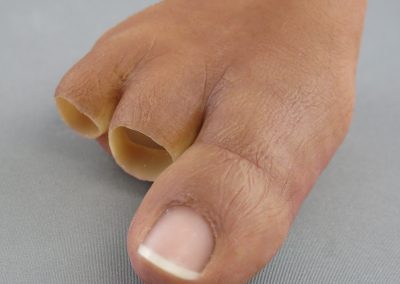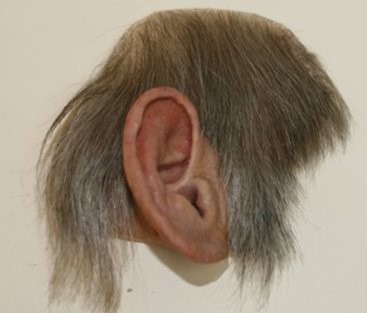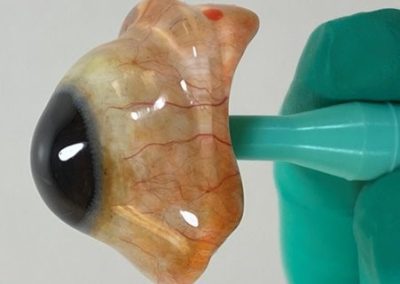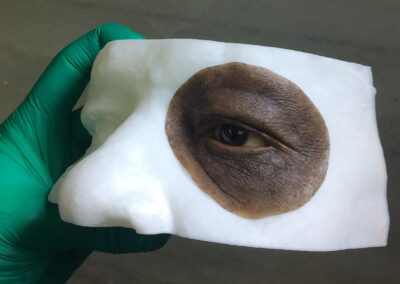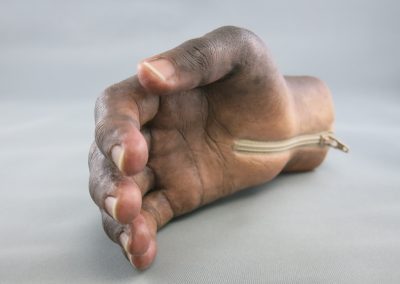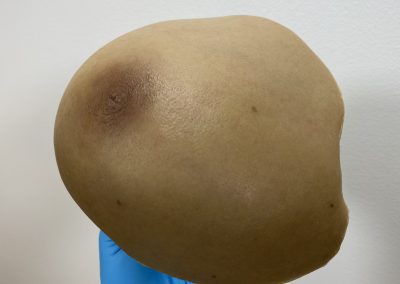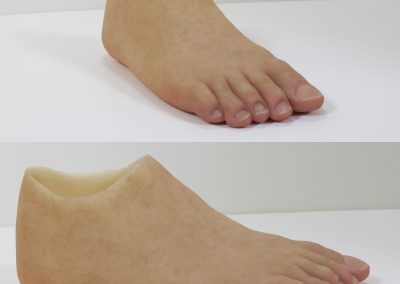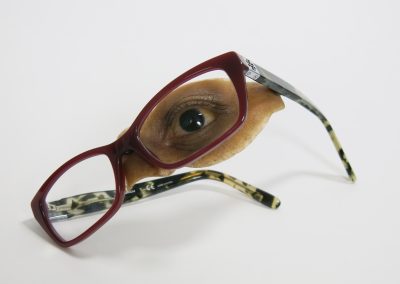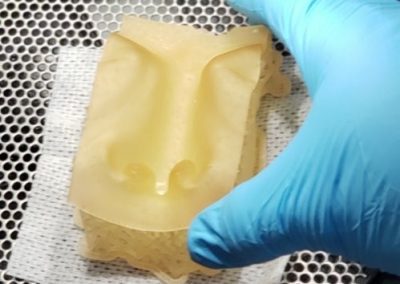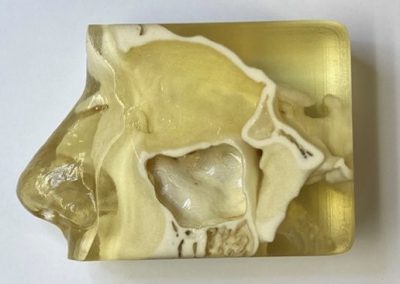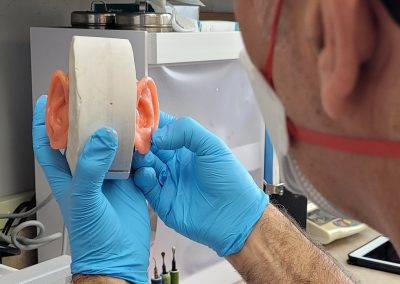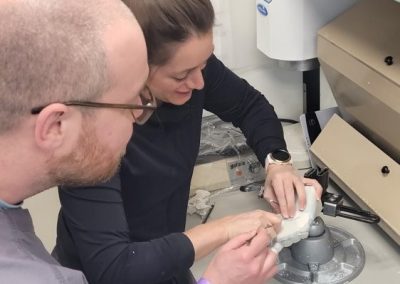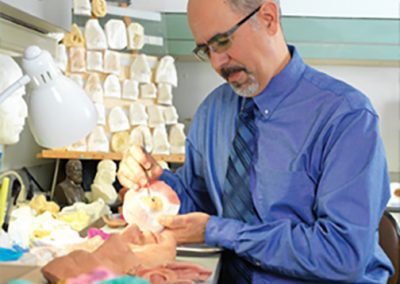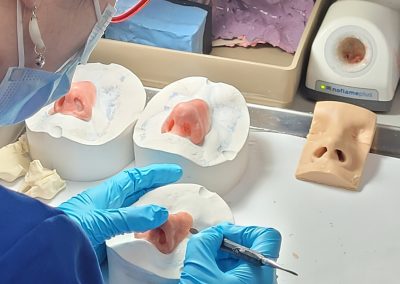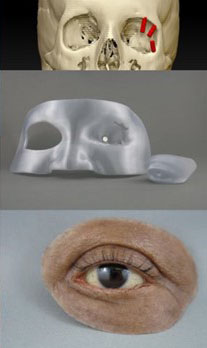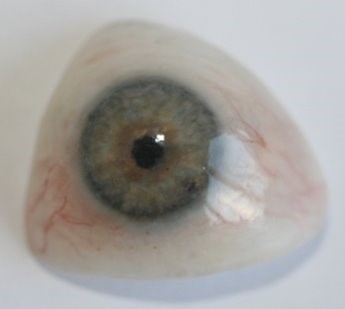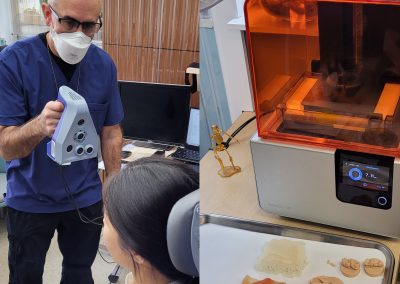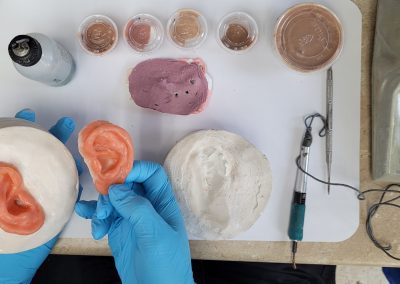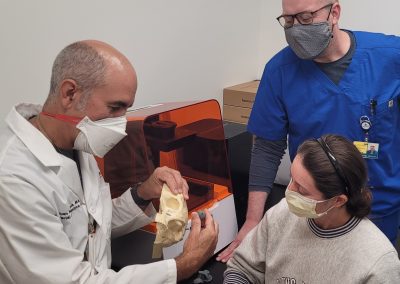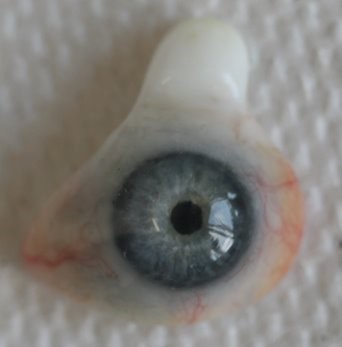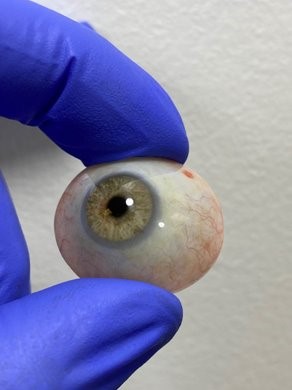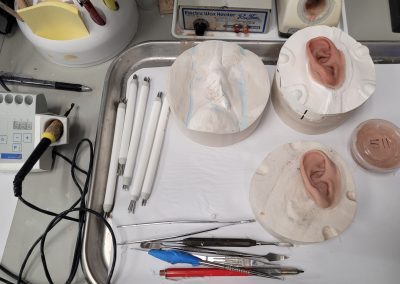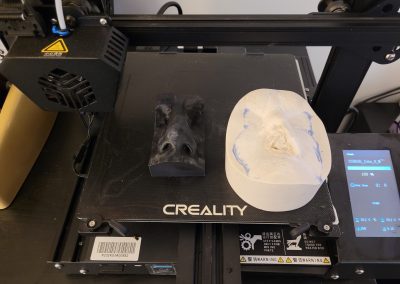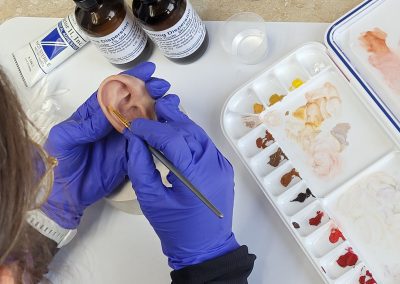Clinical Anaplastology – Science Prerequisites
All applicants are required to complete all 4 prerequisite science courses prior to enrollment in the program (early August).
- Inorganic or General Chemistry (with lab)
- Vertebrate Anatomy (with dissection lab)
- Vertebrate Physiology
- Organ Histology
To help prepare applicants for the challenging sciences taken during our program, the admissions faculty have selected 4 prerequisite science courses. These will provide incoming students the minimum preparation for success in the graduate science courses taken during the CA program.
Taking more than the minimum can offer better preparation and a better knowledge base for a future career in Clinical Anaplastology.
Are the sciences necessary?
Yes! Clinical Anaplastology students take the same Human Anatomy course as the Medical Students at Johns Hopkins! The same lectures, labs, lab presentations and Exams. This is likely one of the toughest courses taught anywhere in the world today. Students in this course takeaway a firm understanding of the Human body at all stages of development that will expand the knowledge base used in a future career in clinical anaplastology. Because the Hopkins Human Anatomy course starts within the first month of the program, it is essential that incoming students enter our program with a firm foundation in preparatory sciences.
Do all sciences need to be complete before applying to the program?
We recommend having all science prerequisites completed and graded prior to submitting your Portfolio, but it is acceptable to have 3 of the 4 completed and graded by portfolio submission.
Applicants with a strong science background, e.g., science majors or 5 additional sciences, can have 1 or more science prerequisite courses in-progress by the Portfolio due date.
Inorganic or General Chemistry
with lab
A foundation in the fundamental principles of chemistry including atomic and molecular structure, the periodic table, stoichiometry and chemical equations, gas laws, chemical equilibrium, acids and bases, and elementary thermodynamics are helpful preparation. A significant portion of a day in the life of a clinical anaplastologist is spent in a lab measuring and mixing compounds. Familiarity with Chemistry is essential!
Vertebrate Anatomy
with dissection lab
A strong Vertebrate Anatomy lecture class combined with a hands-on dissection lab will help prepare applicants for the science courses taken during the CA program. Learning anatomical terminology and scientific names is encouraged. Artists who have hands-on experience with dissection develop a tactile memory for the different organs, textures, locations and inter-relationships that will inform knowledge of those structures. While hands-on, student-performed, whole specimen, vertebrate dissection labs are encouraged, alternate labs are acceptable (see below).
My college does not offer Vertebrate Anatomy. Are there any substitutions?
Yes, a 2-part Human Anatomy & Physiology course sequence, semester 1 and semester 2, can substitute for both Vertebrate Anatomy and Vertebrate Physiology.
Yes, a Human Anatomy and Physiology one-semester course can substitute for either Vertebrate Anatomy or Vertebrate Physiology (not both).
No, unfortunately, Anatomy for Artists, External Anatomy or Surface Anatomy courses are NOT acceptable for either Vertebrate Anatomy or Vertebrate Physiology. The focus on observation of external anatomy (i.e., figure drawing anatomy) does not offer the science preparation needed for success in the CA program.
My college does not offer Anatomy with hands-on Dissection Lab. What should I do?
The faculty prefer prerequisite Anatomy courses with Labs that maximize opportunities for student-performed, whole specimen, vertebrate dissections.
The ideal course is Comparative Vertebrate Anatomy with dissections of multiple whole specimens (cat, fetal pig, shark, bird, etc.). This course typically is designed for science majors (pre-med) and taught at an accredited college. Yes, this will be a tough course, and it also will offer strong preparation for the CA program and profession.
Types of Anatomy Labs that are acceptable (most to least preferred):
- Dissection Labs – student-performed, whole specimen(s)
- Prosection Labs – teacher-performed, whole specimen(s)
- Virtual Dissection Labs – videos of whole specimen dissections and/or interactive navigation through a whole specimen, with or without student-performed dissections of sample organs
Anatomy Labs that are not preferred:
- Plastinated specimen Lab – sample specimens infused with plastic (no movement, no interactivity, details such as nerves are poorly preserved)
- Plastic model Lab – plastic shaped like organs
- External Anatomy Lab at an art college – least helpful scientifically; and likely NOT an acceptable Anatomy course
If you are not finding an Anatomy course with hands-on dissection Lab at your college, we recommend these actions:
- Speak with the Biology Department Head at your college. Ask their help in finding a hands-on dissection lab. Share our website with them to help explain why the sciences are important preparation.
- Speak with a guidance counselor at your college. See if your college is connected to another college that does offer a hands-on dissection lab. Many institutions have relationships with other colleges that allow students to take courses otherwise not available.
- Look outside your college but still in your area. Do a diligent search of local colleges offering Anatomy courses.
- Contact us if you have more questions – Request Information.
Vertebrate Physiology
Understanding the complex processes of the cells, tissues, and organ systems of the body is a foundation of medicine and critical preparation prior to beginning the rigorous Human Anatomy course taken as part of the CA master’s program. Look for a class with a focus on organ systems.
My college does not offer Vertebrate Physiology. Are there any substitutions?
Yes, a 2-part Human Anatomy & Physiology course sequence, semester 1 and semester 2, can substitute for both Vertebrate Anatomy and Vertebrate Physiology.
Yes, a Human Anatomy and Physiology one-semester course can substitute for either Vertebrate Anatomy or Vertebrate Physiology (not both).
No, unfortunately, Functional Anatomy for Artists, External Anatomy or Surface Anatomy courses are NOT acceptable for either Vertebrate Anatomy or Vertebrate Physiology. The focus on observation of external anatomy (i.e., figure drawing anatomy) does not offer the science preparation needed for success in CA program.
Histology
Histology is the study of the different tissues of the human body at the microscopic level. Understanding the structures of the human body from the macroscopic (Anatomy) to the microscopic (Histology) levels will aid in anaplastology treatment planning.
Cancer, birth differences and traumatic incidences, the most common reasons patients seek the care of clinical anaplastologists, will impact different tissues in the body: bone, skin, muscle. Having a microscopic understanding of these tissues could influence patient care.
My college does not offer Histology. Are there any substitutions?
Not every university or college offers Histology. If you are having trouble finding Histology at your collge, the faculty will accept these substitutions:
- Cancer Biology
- Immunology
- Molecular Biology
- Biochemistry
- Organic Chemistry
Alternatively, there is at least 1 accredited college offering online, non-degree seeking, part-time enrollment in a Histology course – Colorado State University.
If you have additional questions, don’t hesitate to contact us – [email protected] or Request Information.
More posts on the CA Admissions Blog.

